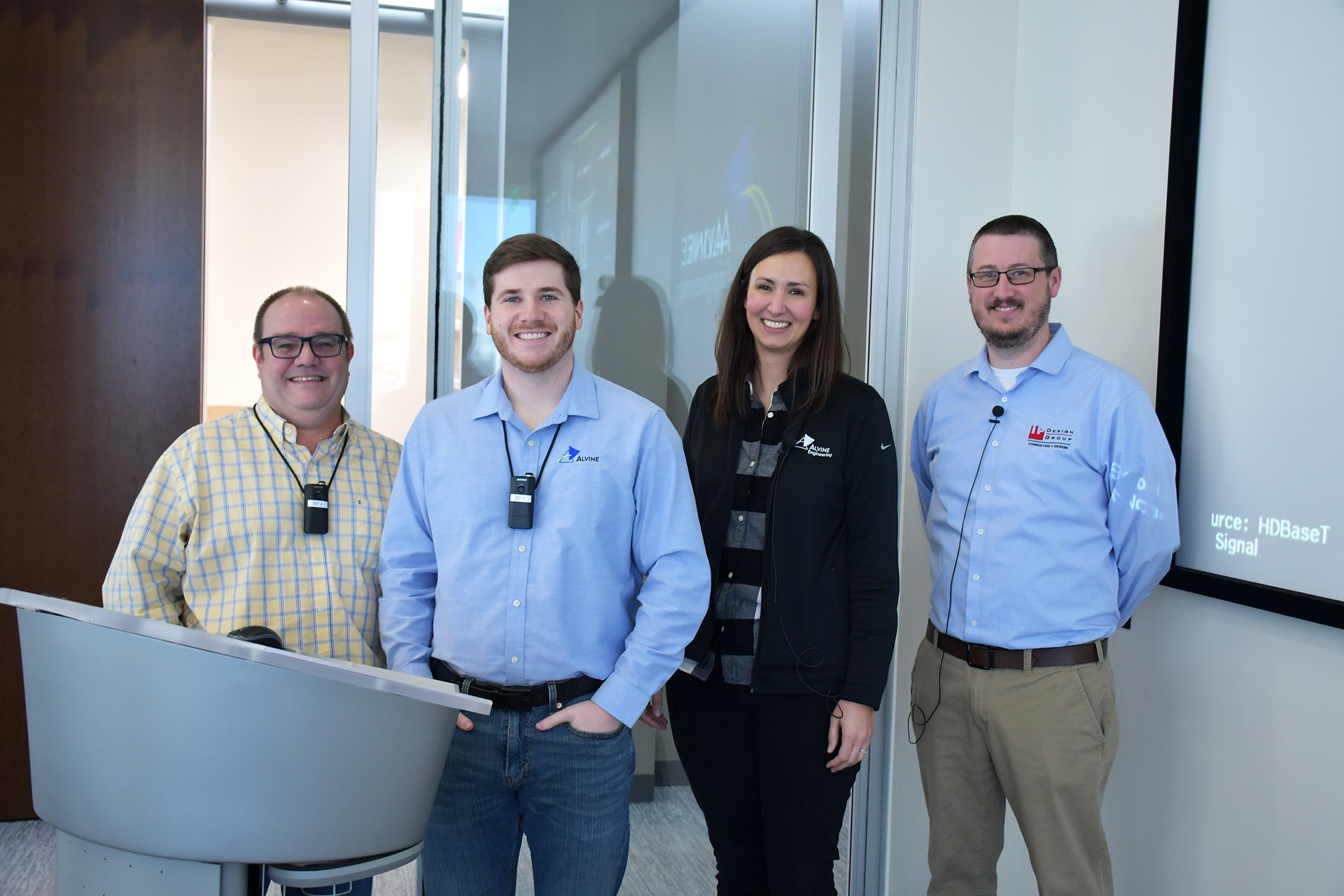The Technology in MEPT Engineering
Last week, Jacob Butler was part of a team that gave a presentation on MEPT Engineering 101 to Alvine Engineering and IP Design Group staff. The team broke down what MEPT (mechanical, electrical, plumbing, and technology) engineering is and how each discipline works with the others to make a cohesive building that runs safely and efficiently. By learning more about each individual discipline, attendees came away with a better understanding of building integration and the importance of cross-discipline teamwork.


Jacob Butler, RCDD draws on his educational background in electrical engineering and his practical experience designing telecommunications, security, and two-way radio systems. His design experience includes systems consulting and design for educational, commercial, power station, and highly technical military environments.
Technology Systems
MEPT Engineering isn’t complete without technology. Jacob Butler, RCDD, a technology systems designer at IP Design Group, explained the importance of talking about technology early in the overall building design process. By making these decisions early, the IP Design Group team can provide more integrated technology systems that work within the building, rather than additions that can stick out. It can also reduce project costs by accounting for equipment, such as cabling, before construction has begun, avoiding costly reconstruction of walls and other building features.
- Locating the point of entry for telecommunications systems on an exterior wall can cut down on conduit costs
- Don’t route MEP systems through telecommunications rooms or water systems above them
- Coordinate with owners early to determine if they intent to use power over ethernet (POE) devices, because if so, they will need a POE system to support the devices
- Maximize audience views by taking room orientation into consideration from screens and projectors
- It’s more cost effective to discuss audiovisual solutions sooner rather than later in the design process
- Keep in mind that some audio solutions, such as on-table microphones, require a pathway
- Inform architects of call buttons and other wall hardware that might impact the aesthetic of a space
- IP Design Group provides pathways to hardware for electronic access doors
- Video surveillance design must be flexible to adapt to the purpose of the system — visible if meant as a deterrent or well hidden to avoid impacting the overall aesthetic
- Architectural acoustics keep in mind the use of each individual space and try to prevent sound transfer into acoustically sensitive areas
- Look to municipal noise ordinances to determine any noise or vibration issues resulting from the surrounding environment
- Acoustical consulting can also help reduce the amount of noise introduced by building mechanical systems
Interested in a Presentation for Your Company?
If you found this information valuable and would like to have Alvine Engineering and IP Design Group present to your team, contact us today!


